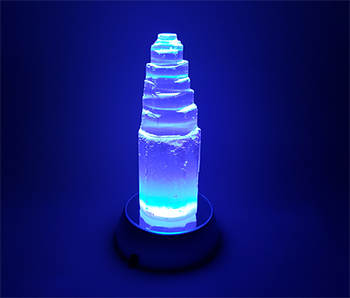In our ongoing journey to explore meteorites, two key classifications demand attention: chondrites and achondrites. Understanding these two types not only deepens our knowledge of meteorites but also sheds light on the formation and evolution of our solar system.
Table of Contents
What Are Chondrites?
Achondrites: A Step Toward Planets
The Relationship Between Chondrites and Achondrites
The Role of Chondrites and Achondrites in Meteorite Science
Conclusion
In our previous blog post, we discussed meteorites as remnants of asteroids, comets, and planetary bodies that have fallen to Earth. Today, we focus on two broad categories that dominate the meteorite landscape: chondrites, which represent the oldest and most primitive matter, and achondrites, which have undergone complex geological processes.
What Are Chondrites?
Chondrites are the most abundant type of meteorites, making up about 86% of all meteorite finds. They are named after the chondrules they contain—small, round particles of silicate minerals that formed in the early solar system, more than 4.5 billion years ago. Chondrites are like time capsules, preserving the original building blocks of the planets. They are considered primitive meteorites, meaning they have not been altered by melting or differentiation.
Chondrites come in several subtypes, including carbonaceous, ordinary, and enstatite chondrites:
- Carbonaceous chondrites are rich in organic compounds and water, making them significant in studying the origin of life on Earth. Some even contain amino acids, the building blocks of life.
- Ordinary chondrites are the most common type and are composed mainly of silicates, iron, and nickel. These are often the meteorites you are likely to find in collections or exhibits.
- Enstatite chondrites are rare and contain high amounts of the mineral enstatite. They likely formed in regions close to the Sun, providing clues about conditions in the inner solar system during its early days.
Since chondrites are undifferentiated, they offer a direct glimpse into the early processes that shaped the solar system. They are essentially the “raw material” from which planets, including Earth, were born.
Achondrites: A Step Toward Planets
Unlike chondrites, achondrites have undergone significant geological processing. They lack chondrules, having melted and re-solidified at some point during their formation. Achondrites are often fragments of larger celestial bodies, like planets or asteroids, that experienced differentiation the process by which a body separates into layers (such as a crust, mantle, and core).
Achondrites represent a later stage in the evolution of the solar system. They provide insight into planetary formation and the dynamic processes that shape worlds. Achondrites are further divided into categories, including:
- HED meteorites, which are thought to originate from the asteroid Vesta. These meteorites are named after three types: howardites, eucrites, and diogenites. They help scientists understand volcanic and tectonic processes on asteroids.
- Martian meteorites, or SNC meteorites, are fragments of Mars that were ejected during impact events and eventually found their way to Earth. Studying these meteorites helps researchers examine Mars’ geology without having to physically travel to the planet.
- Lunar meteorites, as the name suggests, come from the Moon. These achondrites provide valuable data on the lunar surface, complementing the samples brought back by the Apollo missions.
The Relationship Between Chondrites and Achondrites
Both chondrites and achondrites offer essential clues about the formation and evolution of planetary bodies. While chondrites reveal the raw materials present in the early solar system, achondrites show the complexity of geological activity and planetary differentiation.
Chondrites represent the initial stages of matter before any melting or geological activity occurred. Achondrites, on the other hand, are the result of bodies large enough to undergo such processes, forming crusts, mantles, and sometimes even cores. Thus, studying both types is crucial for a complete understanding of solar system evolution.
The Role of Chondrites and Achondrites in Meteorite Science
In meteorite science, chondrites are considered “pristine” because they remain unaltered, making them invaluable for studying the solar system’s beginnings. They also offer clues about the presence of water and organic materials in the early solar system, helping us understand how life-sustaining conditions could develop on Earth.
Achondrites, meanwhile, act as geological records, providing insight into volcanic activity, impact events, and the thermal evolution of planets and asteroids. They help us piece together the history of celestial bodies, including Earth, Mars, and the Moon.
Conclusion
Chondrites and achondrites are more than just fascinating space rocks; they are critical to our understanding of the cosmos. Chondrites offer a glimpse into the raw materials of the early solar system, while achondrites reveal the processes that lead to the formation of planets and moons.
As we continue to study these meteorites, we deepen our understanding of how the solar system evolved and, ultimately, how Earth became capable of supporting life. Whether you’re a seasoned meteorite enthusiast or just beginning your exploration, appreciating the difference between chondrites and achondrites is a vital step in understanding the story of our solar system.


